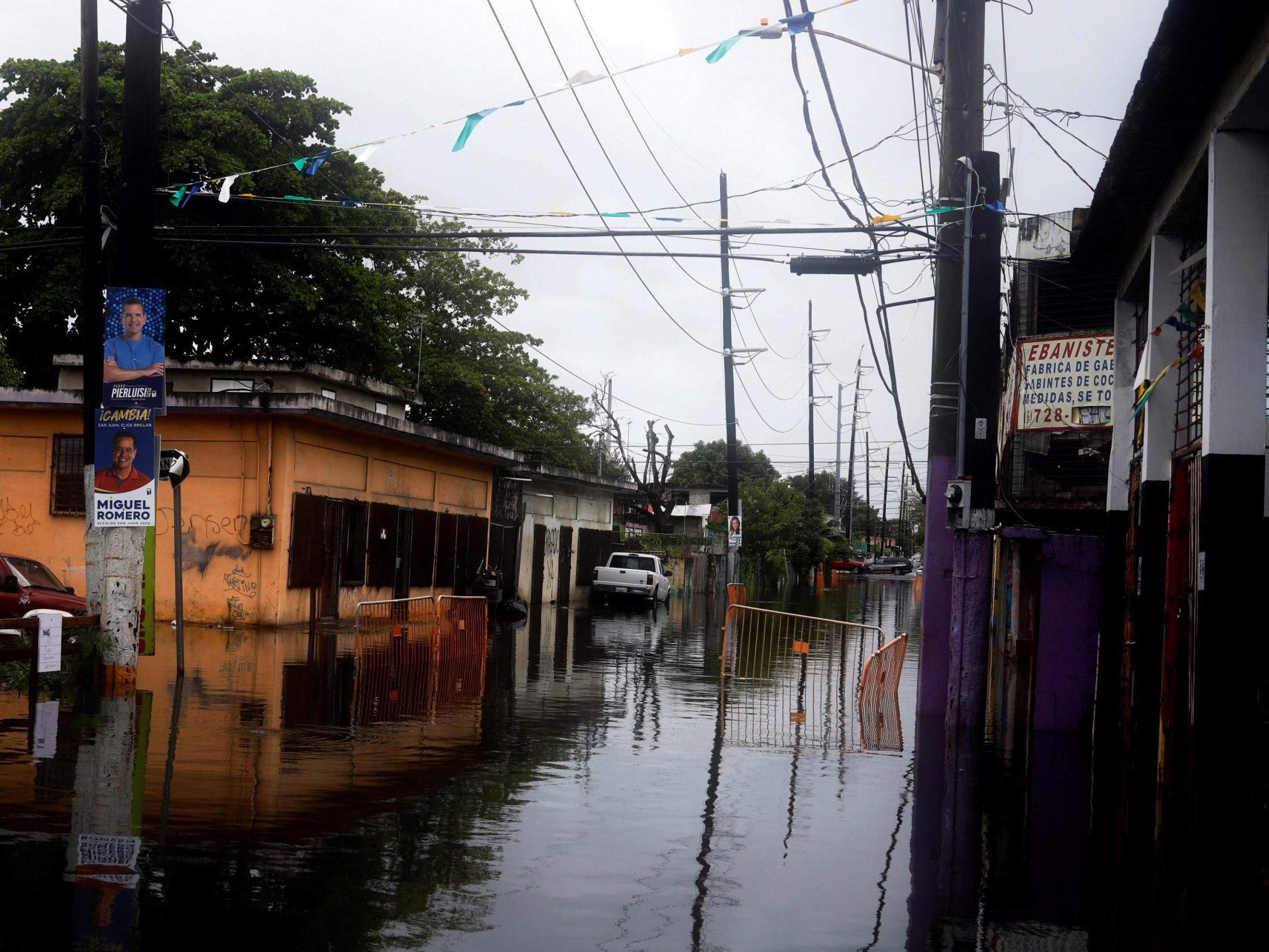Hurricane Isaias travels towards Florida after causing havoc in Puerto Rico and Dominican Republic
'Interests along the entire US east coast should monitor the progress of Isaias', National Hurricane Centre says

Your support helps us to tell the story
From reproductive rights to climate change to Big Tech, The Independent is on the ground when the story is developing. Whether it's investigating the financials of Elon Musk's pro-Trump PAC or producing our latest documentary, 'The A Word', which shines a light on the American women fighting for reproductive rights, we know how important it is to parse out the facts from the messaging.
At such a critical moment in US history, we need reporters on the ground. Your donation allows us to keep sending journalists to speak to both sides of the story.
The Independent is trusted by Americans across the entire political spectrum. And unlike many other quality news outlets, we choose not to lock Americans out of our reporting and analysis with paywalls. We believe quality journalism should be available to everyone, paid for by those who can afford it.
Your support makes all the difference.Tropical storm Isaias has turned into a hurricane that is likely headed towards Florida's east coast this weekend, causing a hurricane watch warning to be issued in parts of the state.
The storm caused life-threatening flash flooding and high winds in Puerto Rico on Thursday and reportedly left 300,000 to 400,000 people without power on the island.
The system swept through the Dominican Republic late on Thursday with similarly devastating effects and by Friday afternoon generated maximum sustained winds near 75 mph, passing the 74 mph threshold to be classified as a hurricane.
From Friday night through to Monday South Florida and east-Central Florida could expect between two to four inches of rain, with isolated maximum totals of six inches.
"There is a risk of impacts from winds, heavy rainfall, and storm surge beginning late this weekend along the northeastern Florida coast and spreading northward along the remainder of the US east coast through early next week," the National Hurricane Centre (NHC) said.
"Interests along the entire US east coast should monitor the progress of Isaias and updates to the forecast."
The NHC has issued a hurricane watch for portions of the Florida east coast, warning that hurricane conditions could are possible within the area. Large areas of the Bahamas are under a hurricane warning as of Friday morning.
Goverrnor Ron DeSantis said “Florida is fully prepared for this and any future storm during this hurricane season”, adding that there are stockpiles of personal protective equipment, generators, bottled water, and meals ready to be distributed.
Officials in the state have made moves to close beaches, marinas, and parks in Miami-Dade County as of Friday and the county has prepared 20 evacuation centres on standby that could be set up with Covid-19 safety measures.
The hurricane forecast comes at one of the worst possible times for the state as it continues to see a large rise in fatalities from Covid-19 after a surge in infections through June and July.
Fears of the unknown extent of the impact the unpredictable system could cause have forced Florida to close a large amount of its coronavirus testing sites over the weekend.
The Florida Division of Emergency Management announced on Friday that state-supported Covid-19 testing sites will remain open in 11 counties.
“Look, if we have a major hurricane here then we’re going to have to evacuate a number of people and then we’re going to have to ... try to keep them separated as much as possible,” Miami-Dade County Mayor Carlos Giménez told CNN. “That’s a concern.”
“When you’re not testing is also a concern,” Mr Giménez said. “But the greater danger, the immediate danger has to be taken care of first, and that’s getting our people out of harm’s way."
Additional reporting by Associated Press.
Join our commenting forum
Join thought-provoking conversations, follow other Independent readers and see their replies
Comments